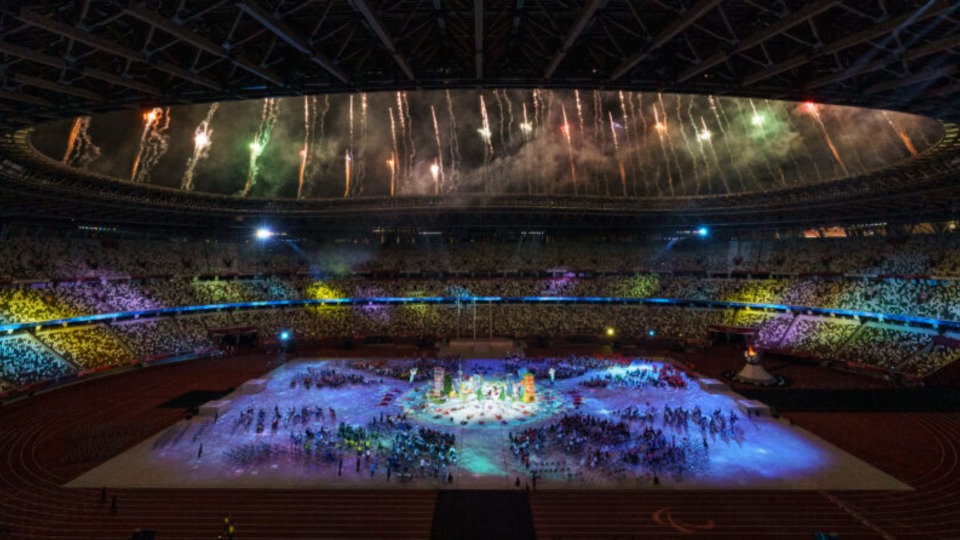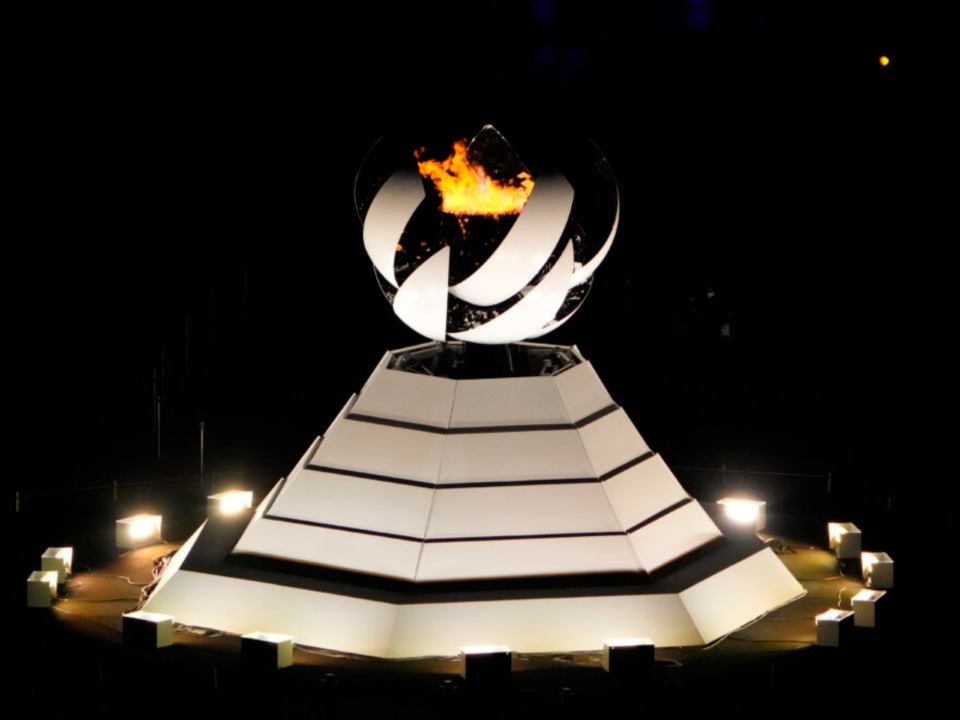
This story appears here courtesy of TheChurchNews.com. It is not for use by other media.
From the track to the pool to the rugby court, three athletes connected to The Church of Jesus Christ of Latter-day Saints won medals at the 2020 Paralympic Games in Tokyo. Aside from the medal counts, athletes also made history for their countries in swimming and wheelchair fencing in Paralympics known for the yearlong pandemic-related delays and protocols. Here’s how these 12 athletes from seven countries did at the Games.
The Paralympic Games have roots in the London Olympic Games in 1948 with the first competition for wheelchair athletes — 16 injured servicemen and servicewomen — in archery. The Stoke Mandeville Games became the Paralympic Games in 1960 in Rome, Italy, according to paralympic.org. These Games featured more than 500 events across 22 sports.
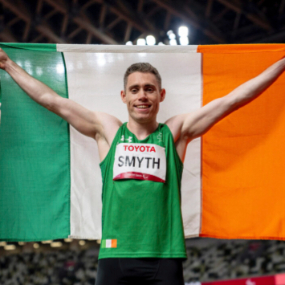
Jason Smyth
Ireland’s Jason Smyth narrowly defended his gold medal from 2016 in Rio de Janeiro, Brazil, by one hundredth of a second in the 100-meter, T13 division (for visual impairments). His time of 10.53 seconds is his season’s best. It’s Smyth’s fourth consecutive Parlympic gold medal in the 100-meter, T13, race.
Smyth, 34, of Ireland, set both the world and Paralympic records of 10.46 seconds in the 2012 London Games. He won gold in the 100-meter, T13 division, in 2008 in Beijing, 2012 in London and 2016 in Rio. He was diagnosed with Stargardts disease when he was 8 years old and is legally blind.
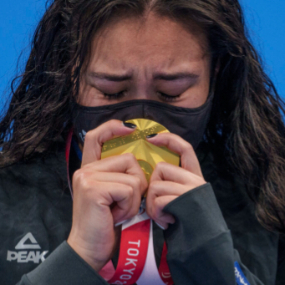
Tupou Neiufi
New Zealand swimmer Tupou Neiufi won gold in the 100-meter backstroke S8 (for physical impairments). The 20-year-old from South Auckland led during both pool lengths of the race and was emotional as she realized she had won gold. She also swam in the 50-meter freestyle S8 and was fifth in the finals.
It’s the second Paralympics for Neiufi. She was initially an alternate for the New Zealand team headed to the Games in Rio de Janeiro, Brazil, in 2016. After a teammate’s injury, she joined the team and swam in three races. At the 2019 world championships in London, she was the silver medalist in the 100-meter backstroke S8 and eighth in the 50-meter freestyle S8.
When Neifu was 2 years old, she was involved in a hit-and-run accident that resulted in brain bruising and left-side paralysis. She had to relearn how to sit, walk and use her arms. She first tried netball and then swimming to help her after the accident. She began swimming at 10 years old and competing at 11.
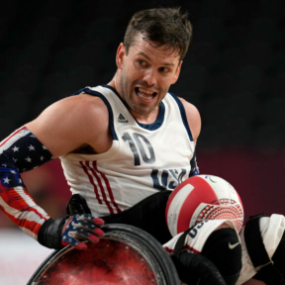
Josh Wheeler
USA’s wheelchair rugby team, including Josh Wheeler, won silver medals after battling Great Britain in the match for the gold medal. They were undefeated until the gold medal match. Wheeler, 41, played in every match and was one of the team’s high scorers.
The Arizona resident broke his neck in a motorcycle accident 15 years ago that caused him to lose function in his lower body. He was part of the team that won silver in 2016 in Rio. Wheeler’s classification is a 2.5, with 3.5 the highest mobility, and teams are allowed four players with a total of up to 8 on the court.
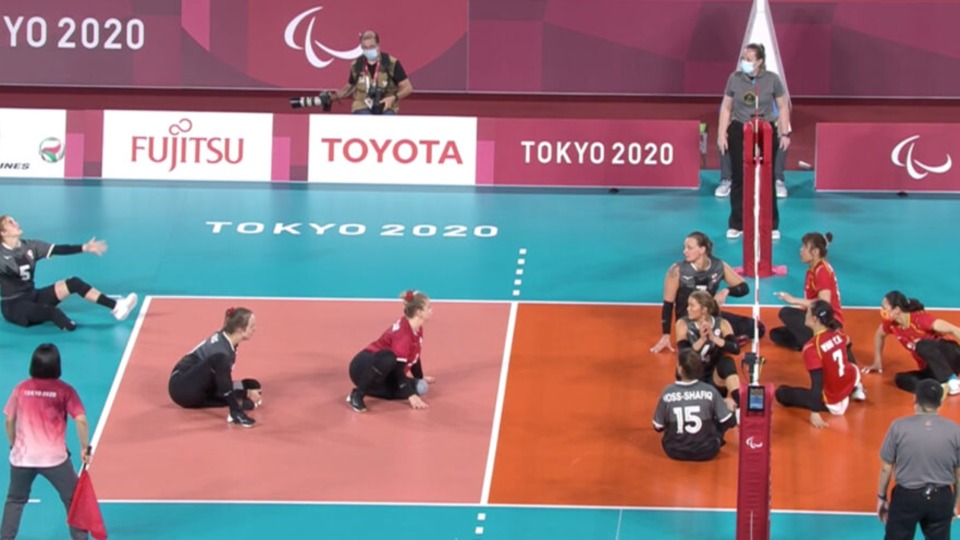
Payden Vair
Canada’s sitting volleyball team, including field player Payden Vair, was fourth of the eight women’s teams in the Paralympics. They lost to Brazil in the bronze medal match.
Vair, 22, of Alberta, is a serving specialist. She was a collegiate soccer player and was introduced to sitting volleyball following a lawn mower accident that resulted in the amputation of her right leg below her knee. Tokyo was her first Paralympics.
Sitting volleyball is similar to indoor volleyball and has a lower net (just higher than a meter, or about 41 inches, for women) and a slightly smaller court.
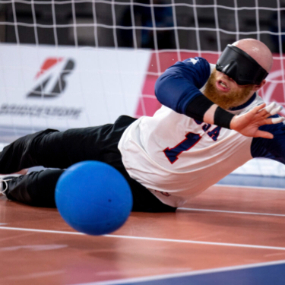
Daryl Walker
USA’s goalball team, including Daryl Walker, placed fourth of the 10 men’s teams in the Paralympics. They lost to Lithuania, the defending gold medal winner from 2016 in Rio de Janeiro, Brazil, in the bronze medal match. Walker, 39, who hails from Florida and trains in Indiana, has albinism that affects his eyesight and is legally blind. He was part of the team winning the silver medal in 2016.
Goalball, a game designed for the visually challenged, is played on a court about the size of a volleyball court with textured lines and a ball that’s about the size of a basketball with bells and holes in it. There are goals at each end of the court that span the 9-meter, or 29.5-foot, width of the court. Each team is allowed three players on the court and all players wear darkened visors, or eye shades, to equalize visual ability as they defend their goal that is 1.3 meters, or 1.4 yards, tall and throw the ball to score points.
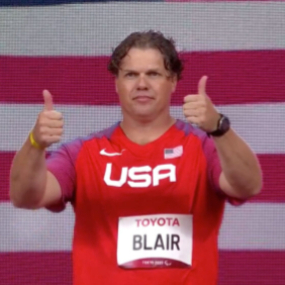
David Blair
At Olympic Stadium, USA’s David Blair was fourth of the five athletes with a throw of 53.18 meters, or 174.47 feet in the discus, in a mixed division of F44 and F64. Both divisions include lower limb deficiencies; F44 is where a prosthesis isn’t required and F64 is the one for when a prosthesis is required.
It was a rainy evening, making the throwing circle slippery.
Blair, 45, of Eagle Mountain, Utah, was the reigning gold medalist from 2016 in Rio and is the Paralympic record holder with 64.11 meters that still stands. He set the world record of 64.26 meters in May in Tucson, Arizona, at the USA Track and Field Throws Festival.
Blair, who was born with a club foot, was high school state champion in discus and received an athletics scholarship to Weber State University, setting records along the way. He picked up the sport after 16 years and then qualified to compete in Rio, where he set a Paralympic record. He’s been battling health challenges, including a broken foot in 2019, and COVID-19 in 2020 followed by appendicitis.
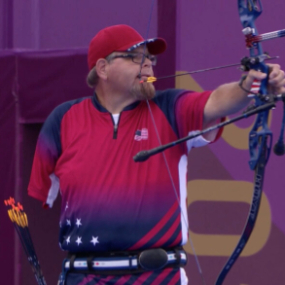
Eric Bennett
USA’s Eric Bennett was back on the archery field for both the individual recurve and mixed recurve team tournaments. Bennett, 47, of Surprise, Arizona, was ninth overall in the men’s individual recurve competition. He won the match in the 1/16 elimination round and then lost in the 1/8th round to the archer who would win silver. In the team competition, he and teammate Emma Rose Ravish lost in the 1/8th elimination round to the team that would go on to win gold.
Tokyo was Bennett’s fourth Paralympics. He was eighth in the recurve division in the 2016 Rio de Janeiro Games and fourth in the 2012 Games in London. The high school physics and engineering teacher in 2019 won silver at the world championships. He lost his right arm above the elbow in a car accident when he was 15 and uses a mouth tab to pull back the string.
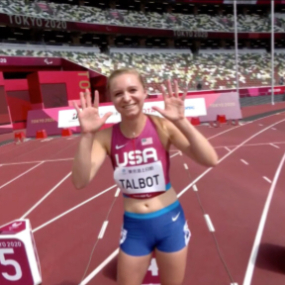
Taylor Talbot
USA’s Taylor Talbot ran in both the 100-meter T13 (for visual impairments) and 400-meter T13 race heats, overall placing 17th and 13th, respectively. It was a rainy evening for the 400-meter T13 race.
Talbot, 20, of Oregon, has retinitis pigmentosa, a degenerative eye condition, and is legally blind. When the Paralympic track and field team was announced, she was the final name on the roster. The next day, she was told that there was a calculation error and that she wasn’t on the team. The BYU–Idaho student was later named as an alternate and then given a direct invite to come to Tokyo.
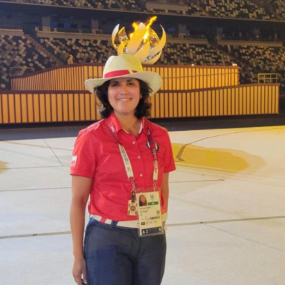
Margarita Faundez
Chile’s Margarita Faundez had a season’s best time of 5:46.50 in the 1,500-meter, T11 (for visual impairments) preliminary heats as she raced with guide Francisco Segovia. Race guides, who are connected to the runner at the hand or wrist, are required in the T11 division. She was 10th overall.
Faundez, 33, of Santiago, was diagnosed at 5 years old with retinitis pigmentosa, which is a degenerative eye disorder. Tokyo is her second Paraympics. She won bronze in the 1,500-meter race T11 at the 2019 Parapan American Games. She’s had multiple health challenges as she prepared for the Paralympics.
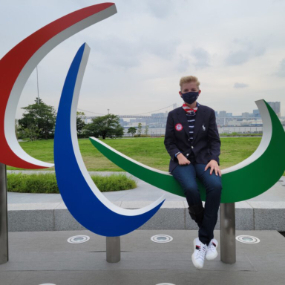
Shelby Jensen
When USA’s Shelby Jensen and teammates Ellen Geddes and Terry Hayes competed in the women’s team foil tournament and the women’s team epee, they were first to represent the USA in the team competitions since 2004. They were eighth and seventh, respectively.
Jensen, 20, competed in the individual saber and epee, category A, tournaments, overall placing 15th and 12th respectively. Athletes who have a Category A classification have good sitting balance — with or without leg support — and a normal fencing arm.
Jensen, of Salt Lake City, who is a five-time national champion, is paralyzed on her right side due to strokes she had when she was 7 years old. She started fencing when she was 15 and fences left-handed. The first-time Paralympian is engaged and planning a September wedding.
Each fencer is seated in a wheelchair fastened to the floor and can move their upper bodies as they attack, guard, parry and engage.
The epee is the heaviest of the three fencing weapons and is like a dueling sword. The sabre is derived from the cavalry sword. The foil is the lightest of the three weapons, and is derived from a court sword, according to olympics.com.
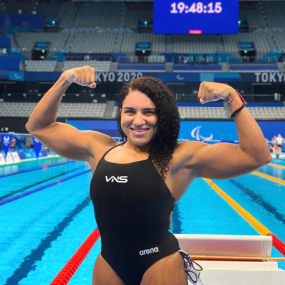
Alejandra Aybar Diaz
Alejandra Aybar Diaz became the first swimmer representing her native Dominican Republic to compete in the Paralympics and was one of her country’s flag bearers at the opening ceremonies. She swam in the 50-meter freestyle S8 (for physical impairments) and 100-meter breaststroke SB6 (for physical impairments) heats and was 13th and 11th overall. She was eighth in the 100-meter butterfly S8 (for physical impairments) final.
This is the 32-year-old industrial engineer’s first Paralympics. Aybar is 4 foot 3 inches tall, has brittle bone disease, osteogenesis imperfecta, also known as crystal bone disease.

Todd Hodgetts
Australia’s Todd Hodgetts was one of the three throwers in the shot put F20 (for intellectual impairments) who were disqualified for reportedly failing to meet call room timings. The trio were allowed to compete under protest.
According to his social media postings, Hodgetts was seventh of the eight throwers. On the official results, it’s listed as a DNS, or did not start. A formal protest was filed by Athletics Australia, which was denied and the DNS will stand in the results.
Hodgetts, 33, of Melbourne, Australia, won gold in the shot put F20 division at the 2012 London Paralympic Games — and set a world record. In 2016 at the Rio Games, he won bronze. Nicknamed “The Hulk,” Hodgetts was diagnosed with Asperger’s syndrome when he was 8 years old.
